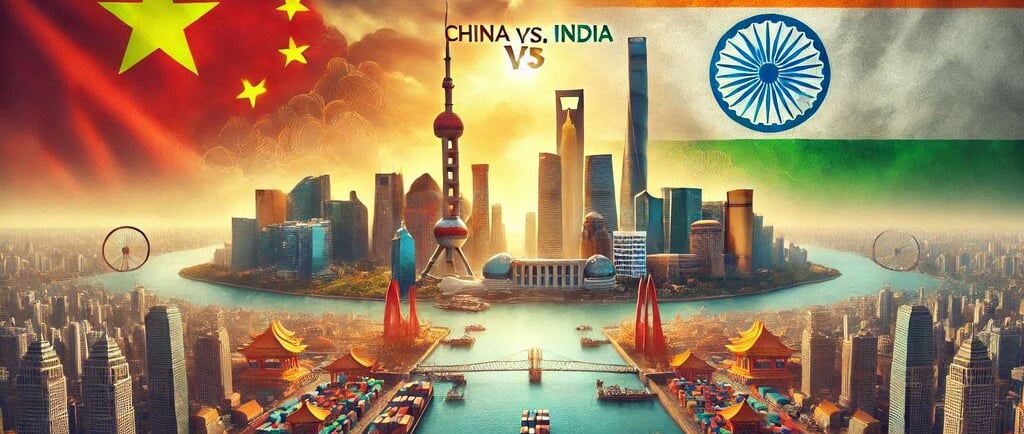Let us collaborate to foster global growth and development together.
China vs. India: A Comparative Analysis of Trade Opportunities for Businesses
Exploring China vs. India in trade opportunities for businesses: insights on costs, markets, labor, and infrastructure to make informed choices.
COMPARATIVE INSIGHTS
10/31/20243 min read


China vs. India: A Comparative Analysis of Trade Opportunities for Businesses
Meta Description: Exploring China vs. India in trade opportunities for businesses: insights on costs, markets, labor, and infrastructure to make informed choices.
Introduction: Choosing Between Giants in Trade
When it comes to exploring international trade, China and India often top the list of destinations for businesses looking to expand globally. Both nations offer immense opportunities, but each has its unique set of advantages and challenges. In this article, we’ll explore how these two economic giants stack up in terms of trade opportunities, helping you make an informed decision based on your business goals.
Why China and India Dominate the Global Trade Scene
Both China and India have positioned themselves as key players in global trade, but what makes them so attractive? Let’s dive into some facts:
China: Known as the “world’s factory,” China excels in manufacturing with efficient supply chains, world-class infrastructure, and competitive labor costs.
India: A leader in technology and services, India boasts a fast-growing middle class and offers opportunities in various sectors such as IT, textiles, and pharmaceuticals.
Their unique strengths make them formidable choices for businesses seeking international opportunities.
Cost Comparisons Between China and India
When evaluating trade opportunities, cost factors often play a critical role in decision-making.
Manufacturing Costs:
China: Although wages have risen in recent years, China remains competitive in mass production due to its advanced technology and streamlined processes.
India: Labor in India is often cheaper, making it attractive for low-cost production. However, infrastructural inefficiencies can offset these savings.
Export Taxes and Tariffs:
China’s policies tend to favor exports, with well-established free trade zones and tax incentives for specific industries. India, while improving, still faces challenges with high import duties on raw materials.
Infrastructure and Logistics
Reliable infrastructure is essential for seamless trade operations. How do China and India compare?
China’s Edge in Infrastructure:
China’s modern ports, high-speed rail networks, and efficient logistics systems give it a clear advantage in global supply chain operations. The country’s Belt and Road Initiative further strengthens its position as a global logistics hub.
India’s Infrastructure Growth:
India has made significant strides in infrastructure development through initiatives like “Make in India” and “Sagarmala.” However, rural areas and small businesses still face challenges due to inconsistent connectivity.
Tip for Businesses:
Consider the type of product you’re dealing with. For high-volume, time-sensitive goods, China’s infrastructure is hard to beat. For technology or custom products, India’s emerging systems may suffice.
Labor Market Analysis
The workforce is a pivotal factor in trade success.
China:
China’s labor market is highly specialized. The country’s workforce is skilled in advanced manufacturing techniques, making it an excellent choice for technology and electronics production. However, rising wages in urban centers can be a concern for cost-sensitive industries.
India:
India offers a younger workforce with proficiency in English, making it ideal for industries like IT, customer support, and creative services. The relatively low costs make India a go-to for startups and SMEs.
A Key Insight:
While China’s labor is suitable for mass production, India excels in service-oriented and innovation-driven industries.
Market Opportunities in China vs. India
Both China and India present vast domestic markets for businesses wanting to target end consumers.
China’s Market:
China’s urbanized and tech-savvy population offers excellent potential for consumer goods, electronics, and luxury brands. Companies like Apple and Tesla have leveraged this vast market with great success.
India’s Growing Middle Class:
India’s young and growing middle class is driving demand in sectors like e-commerce, automotive, and healthcare. Startups like Ola and Flipkart showcase India’s vibrant market dynamics.
Trade Challenges to Keep in Mind
No discussion about trade would be complete without mentioning the challenges.
China: Concerns over intellectual property rights (IPR) and trade tensions with certain countries can pose risks.
India: Bureaucratic hurdles and inconsistent policy implementation remain issues for foreign investors.
For both nations, cultural nuances and local regulations demand careful navigation.
Making the Right Choice
When deciding between China and India for trade opportunities, consider these factors:
Product Type: Mass production? Go for China. Services or custom manufacturing? India could be the better choice.
Budget: China suits high-tech, large-scale projects, while India is favorable for cost-effective, labor-intensive industries.
Time-Sensitivity: If rapid delivery is critical, China’s infrastructure may better suit your needs.
Conclusion: Exploring Opportunities in Two Economic Giants
China and India offer compelling yet distinct trade opportunities. Choosing between the two depends largely on your industry, budget, and business goals. By leveraging China’s advanced manufacturing capabilities or India’s cost-effective, service-driven environment, businesses can unlock unprecedented potential in global markets.
Ready to explore trade opportunities? Comment below or check out our related articles to dive deeper into actionable strategies for international success.
Innovation
Cutting-edge solutions for industrial efficiency and productivity.
© 2024. All rights reserved.


